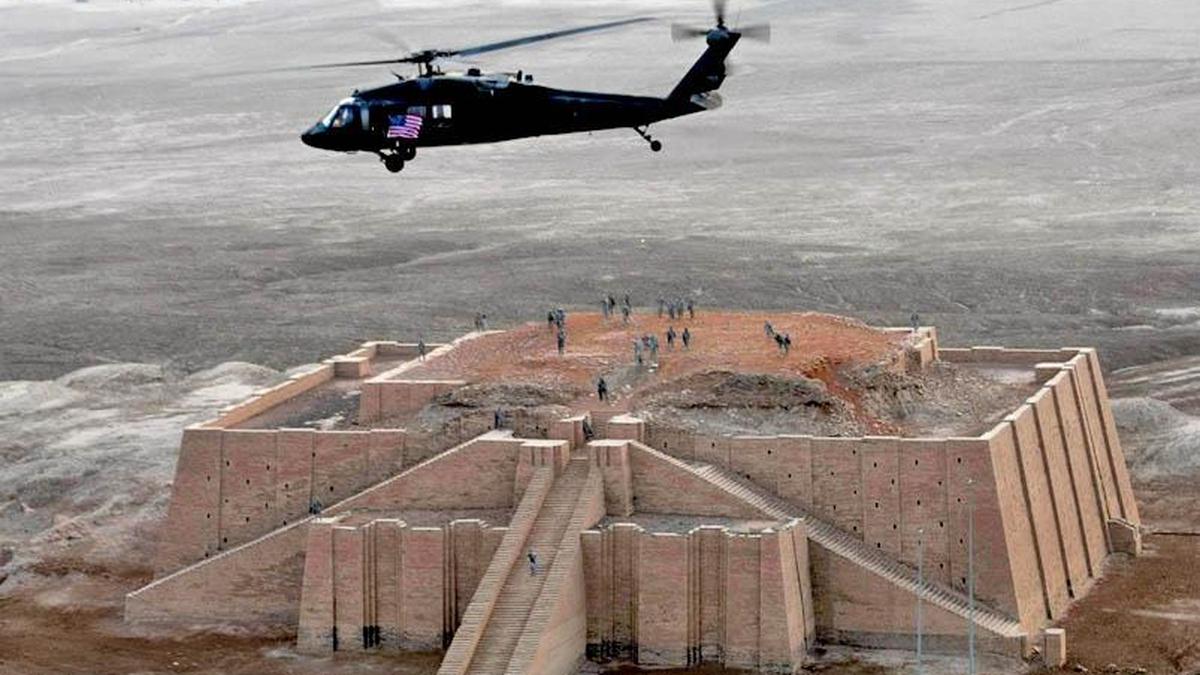Cradle of civilisation at risk of erosion in Iraq due to climate change

IN NEWS:
Cradle of civilisation at risk of erosion in Iraq due to climate change
ANALYSIS:
- Iraqi officials have raised concerns that climate change is threatening ancient monuments in the country’s southern cities, including Ur and Babylon, which are among the earliest centres of human civilisation.
- Harsh and dry weather is increasing soil salinity, accelerating the erosion of archaeological sites and damaging historic structures that date back thousands of years.
- The Ziggurat of Ur, a UNESCO World Heritage Site dedicated to the moon god Nanna, is facing severe deterioration.
- Sand dunes are eroding the northern side of the structure.
- The third layer has already deteriorated, and erosion has begun affecting the second layer, according to local archaeologists.
- The Royal Cemetery of Ur, discovered by Sir Leonard Woolley in the 1920s, is also at risk of collapse as salt deposits from increasing soil salinity eat away at its mud-brick foundations.
- Experts attribute the rise in salt accumulation to global warming, which has intensified droughts and temperature rise in southern Iraq — a region where the Tigris and Euphrates rivers converge before reaching the Gulf.
- In Babylon, climate change is causing high salinity levels that threaten the clay-based materials of ancient Sumerian structures.
- Officials from Iraq’s Ministry of Culture and Tourism have highlighted that funding shortages are hampering restoration efforts, making many sites more vulnerable to further deterioration.
- Previous conflicts, including the Iran-Iraq War, the 1991 Gulf War, the 2003 U.S.-led invasion, and subsequent insurgent violence, have already endangered the country’s cultural heritage.
- The latest threat — climate-induced salinity and erosion — poses a long-term risk to Iraq’s archaeological legacy and cultural identity.
- Improper restoration work in past decades has further weakened ancient structures, and experts warn that without urgent conservation and climate adaptation measures, many buried cities could be lost to salt and sand damage.
STATIC PART / BACKGROUND:
- Ziggurat of Ur:
- A stepped pyramid temple constructed around 2113 BCE in honour of the moon god Nanna during the Third Dynasty of Ur.
- One of the best-preserved examples of ancient Mesopotamian architecture, located in Dhi Qar province, southern Iraq.
- Ur:
- An ancient Sumerian city-state, considered one of the world’s earliest urban civilisations and traditionally associated with Abraham’s birthplace.
- Babylon:
- Capital of the Babylonian Empire, famed for its monumental architecture including the Ishtar Gate and the Hanging Gardens (one of the Seven Wonders).
- Mesopotamia:
- Region between the Tigris and Euphrates Rivers; widely recognised as the “Cradle of Civilisation” where writing, urban planning, and governance first emerged.
- UNESCO World Heritage Sites in Iraq:
Include Ur, Babylon, Hatra, and Ashur — each reflecting different eras of Mesopotamian cultural evolution.
Updated – 30 Oct 2025 ; 06:54 PM | News Source: The Hindu